|

Karazhanbas Oilfield, Kazakhstan
The Karazhanbas oilfield is located in the west of Kazakhstan. It is a giant onshore heavy oil field located on the shore of the Caspian Sea. It covers a gross area of approximately 180 square kilometers with a depth of 250-480 meters. The estimated proved oil reserves of the Karazhanbas oilfield in Kazakhstan were equivalent to 167.5 million barrels as of 31 December 2020 (100% project basis). The quality of oil produced from the Karazhanbas oilfield is typically 30 degree API.
Oil has traditionally been produced in the Karazhanbas oilfield primarily through the recovery process known as Cold Heavy Oil Production with Sand (CHOPS) and water injection in the development drill area. Starting from 2008, thermal enhanced recovery processes of Cyclic Steam Stimulation (CSS) and steam flooding technologies were implemented on a large scale in the eastern and northern parts of the oilfield.
Oil produced in Karazhanbas oil field is transported to the Ports at Black Sea or Baltic Sea through pipelines, and then supplied to the major markets in Europe by oil tankers. |
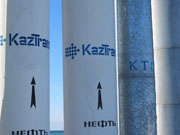 |
 |
 |
On 12 December 2007, the company completed the acquisition of the Kazakhstan interests from CITIC Group. It now has an indirect interest in 50% of the issued voting shares of KBM and 50% of the participation rights in each of TMS and ATS. TMS is principally engaged in the provision of oil well drilling and workover services. The principal activities of ATS are the provision of transportation and other oilfield related logistics services. KBM is engaged in the exploration, development and production of oil and holds the right to develop and produce oil in the Karazhanbas oilfield in Kazahkstan until 2035. The company and the national oil company in Kazakhstan KazMunaiGas (the holder of the remaining 50% Kazakhstan interest) will manage and operate the Kazakhstan Business as a joint venture through respective ownership interests.
The development plan of Karazhanbas oilfield in the next five years is expected to improve recovery rates throughout the oilfield, which include a wider application of CSS while maintaining water injection in some development drill areas, introduction of new technologies such as fire flooding and polymer injection, redevelopment of existing wells and drill new wells. In order to meet increased production requirements and achieve cost efficiency, additional supporting infrastructure and facilities, such as installation of additional steam generation system, power supply system, natural gas utilization system, water supply system and water filtration system will be installed to enhance field processing capacity.
|
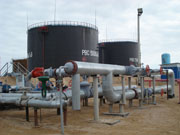 |
 |
 |
Hainan-Yuedong Block, PRC
Hainan-Yuedong Block is located in the Bohai Bay Basin in Liaoning Province, PRC. The principal field in the Hainan-Yuedong Block is Yuedong oilfield, which has an estimated proved oil reserves of 30.3 million barrels as at 31 Dec 2020 (100% project basis).
In October 2007, CITIC Haiyue, an indirect wholly-owned subsidiary of the Group, completed the acquisition of a 90% interest of Tincy Group from Far Great Investments Ltd. Tincy Group is the contractor who holds the right to explore, develop and operate the oilfield in the Hainan-Yuedong Block until 2034. Tincy Group will co-operate with China National Petroleum Corporation ("CNPC") to develop the Hainan-Yuedong Block and engage CNPC to carry out certain oil operations under the Petroleum Contract ("PSC") on terms to be agreed by Tincy Group and CNPC in an operation agreement.
In August 2009, the construction of foundations for oil drilling and the pre-drilling preparation on the pilot testing area on the first artificial island (the "Platform A") and two supplementary production platforms of the Yuedong oilfield were completed. The construction of production facilities was completed in December 2009. After a series of combined testing, the Platform A is now equipped with oil extraction capability. In May 2010, the power supply system, which supplies electricity to the pilot testing area on Platform A, was completed.
Approval of the environmental impact assessment was obtained in 2Q 2010. Following this, in August 2010, the overall development plan of the Yuedong oilfield (the “ODP”) was approved by the National Development and Reform Commission of the PRC. Pilot production commenced in 4Q 2010. The project went into commercial production stage in 2011.
The construction of other artificial islands commenced in 2010, and construction of production facilities has completed by stages. 2014 was the Yuedong oilfield's first full year of production.
In May 2020, The adjustment plan for the overall development plan of Yuedong Block in Hainan-Yuedong Block completed filing and registration at the National Energy Administration of China. In February 2021, the development and adjustment of well drilling work on the platform C was completed. Tincy Group currently is working on the development and sdjustment of well drilling work on the platform B. |
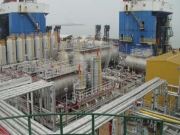
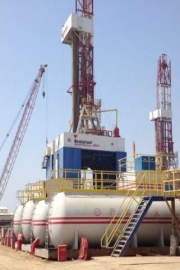 |
 |
 |
Seram Non-Bula Block, Indonesia
The Seram Non-Bula Block is located on Seram Island, Indonesia. Under the Production Sharing Contract ("PSC") , the total area is about 1,352.8 square kilometres. The principal field in the Seram Non-Bula Block is the Oseil Field. The Oseil field is located in the Seram Non-Bula PSC area on the island of Seram about 300 kilometers east of the city of Ambon. The field is located inland from the northeast coast of the island. As at 31 December 2020, the Seram Non-Bula Block had estimated proved oil reserves of 3.3 million
barrels. (100% project basis) , which mainly consists of 15° to 22° API oil.
Discovery of the Oseil Field occurred in 1993 with the drilling of the Oseil-1 well, which found oil-bearing sections within the Manusela Carbonate. Since that time, nine additional wells, both vertical and horizontal, have been drilled to develop the field and have identified oil-bearing Manusela accumulations in four separate closures. Currently, oil has been produced from three of the four fault block closures. In the period from 1988 to 2002, the operator has drilled four exploration wells in the Seram Non-Bula Block, resulting in commercial oil discovery in the Oseil Field.
|
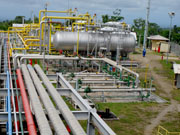 |
 |
 |
On 23 November 2006, CITIC Seram (an indirect wholly-owned subsidiary of the Company) completed the acquisition of a 51% participating interest from KUFPEC. As of the same date, CITIC Seram became the operator responsible for the day to day petroleum operations at the Seram Non-Bula Block. As the operator of the Seram Non-Bula Block, CITIC Seram is expected to maintain and improve current production levels at the Oseil Field on an economic and efficient basis in order to maximise output at the Oseil Field. Under the PSC, the Contractor (collectively the participants other than BPMIGAS namely CITIC Seram, KUFPEC, GPI and Lion) has been granted a 100% right to explore, develop and produce oil from the Seram Non-Bula Block for a period of 20 years until 2019.
The development of the Oseil Field is divided into three phases in accordance with the PSC. Phase one of the development includes the acquisition and processing of 3D seismic over the Oseil Field, drilling of well, well completions, installation of production facilities, pipelines, storage facilities, oil export facilities and other supporting infrastructure to operate and produce the wells, and establish a commercial market for Oseil crude oil. Phase two of the development includes drilling and completion of additional development wells and expansion of production facilities, pipelines, storage facilities, oil export facilities and other supporting infrastructure to operate and produce oil. Phase three of the development includes drilling, completion and expansion pipelines of additional development wells. Proposed future exploration in the Seram Non-Bula Block also expected to include a seismic exploration program, seismic survey and the drilling of additional exploration wells.
In 2012, Lofin-1 exploration well (“Lofin-1”) was drilled to explore the oil and gas potential. Lofin-1 was drilled to a total measured depth of 14,525ft and results of the drilling revealed the presence of gas and oil/condensate. In October 2014, CITIC Seram commenced drilling of Lofin-2 appraisal well (“Lofin-2”) to appraise the Lofin-1 discovery and evaluate the potential oil/condensate and gas deposits within the Manusela Formation. Lofin-2 intersected the reservoir at 15,142ft, 410ft deeper than planned and reached a total measured depth of 19,230ft. Well logs indicate the presence of hydrocarbons in several intervals, and hydrocarbons were recovered from several drill stem tests.
Sproule International Limited (“Sproule”), an independent petroleum consulting firm, has been engaged to appraise and evaluate the presence and amounts of oil/condensate and gas within the Manusela Formation Sproule prepared the evaluation report in accordance with the “best practices” recommended in the Canadian Oil and Gas Evaluation Handbook. The estimates of contingent resources and contingent reserves contained in the report have been evaluated according to the classifications and definitions promulgated by the Upstream Oil and Gas Executive Agency of Indonesia (“SKK MIGAS”) .
Based on the evaluation report prepared by Sproule, as of 31 August 2015, the amounts of contingent reserves and contingent resources of gas initially-in-place, recoverable gas and condensate in the Lofin field are estimated at 3,070Bcf, 2,020Bcf and 18.25MMbbls respectively (100% basis). Estimated barrels of oil equivalent is 354.9MMbbls (100% basis).
CITIC Seram entered into an agreement on 7 February 2018, pursuant to which CITIC Seram agreed to sell all of its rights, interests and obligations in respect of a 10% interest in the PSC to an independent third party. Completion of the sale is subject to certain conditions including applicable governmental approvals and the requisite approval of other participants in the PSC. The completion of the sale of the Sale Interest to the third party occurred on 4 May 2018 (“Completion”). Following the completion of the sale, CITIC Seram retains a 41% interest in the PSC.
The application to renew the PSC was approved by the Indonesian government and the PSC participants officially signed the new PSC with the Indonesian government on 31 May 2018 in Jakarta, Indonesia. The existing PSC will expire in October 2019. The new PSC extends existing rights to explore, develop and produce oil for an additional 20 years until October 2039. CITIC Seram remains the operator of the Seram Block and will hold a 41% interest in the new PSC. |
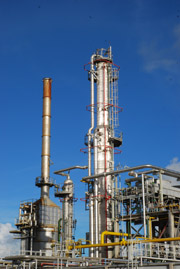 |
 |
 |
Updated: 13 April 2021
|
 |
 |
|




























